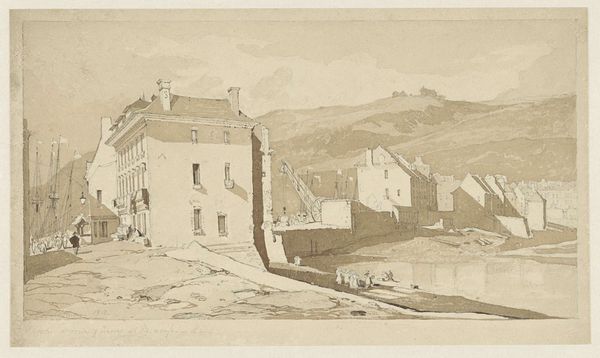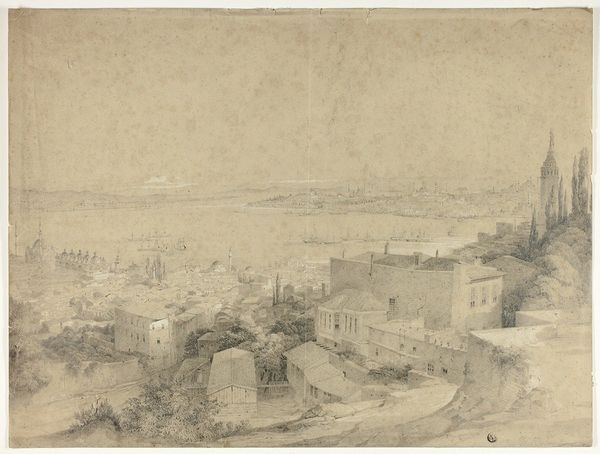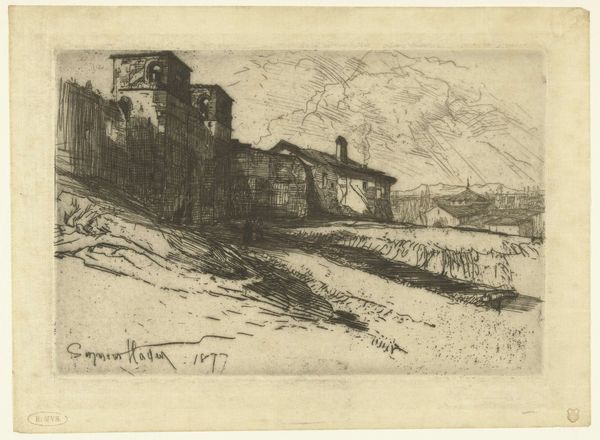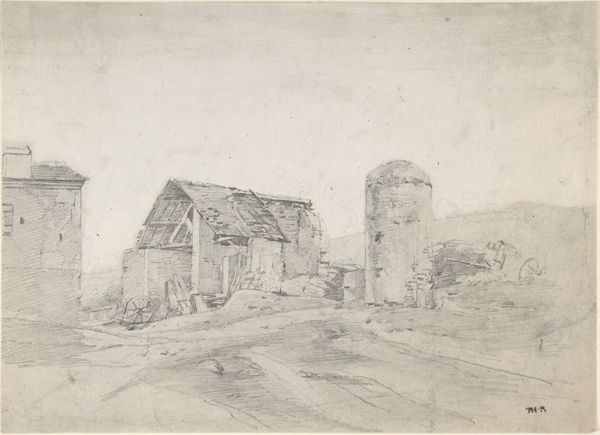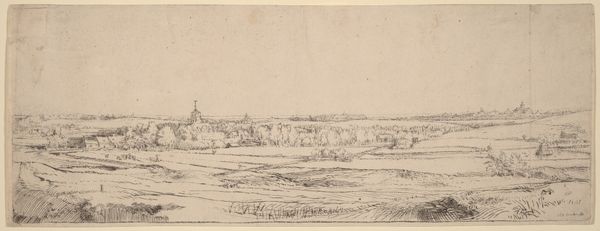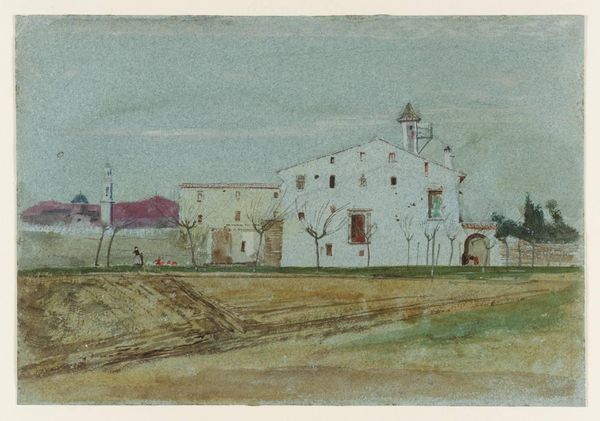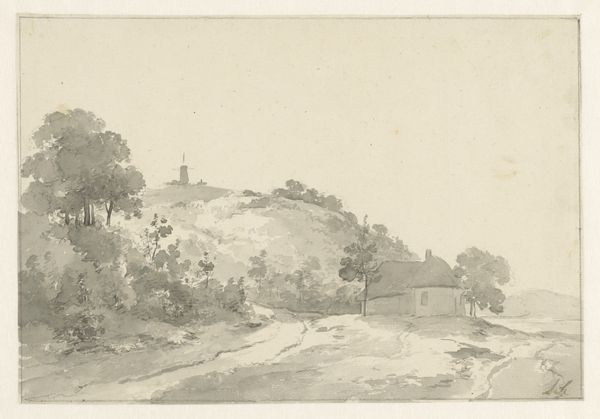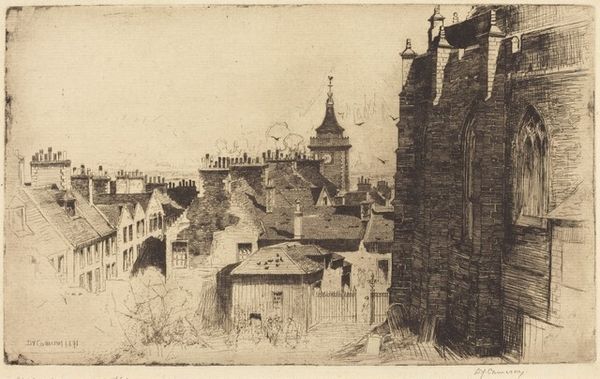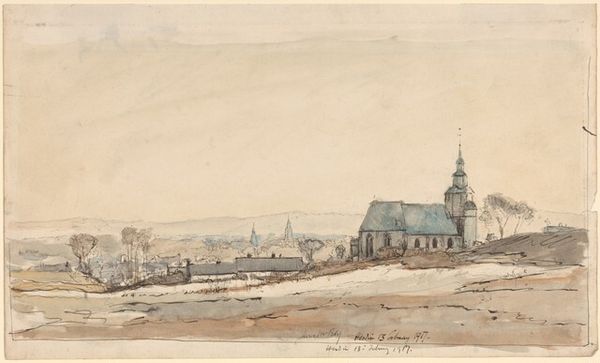
drawing, pencil
#
drawing
#
pencil sketch
#
landscape
#
etching
#
pencil
#
cityscape
#
realism
Dimensions: height 147 mm, width 228 mm
Copyright: Rijks Museum: Open Domain
Curator: The work before us, attributed to Pierre Louis Dubourcq, offers a 'View of De Koog on Texel,' rendered sometime between 1825 and 1873. Editor: It has such a dreamy quality, doesn't it? A quiet stillness hangs over the scene. All delicate lines and hushed tones; you can almost hear the wind whispering across the dunes. Curator: Absolutely. Dubourcq uses primarily pencil and perhaps some etching to depict this cityscape nestled within a broader landscape, placing an emphasis on realism in his rendering of architectural details and natural forms. What strikes me is how the perspective emphasizes a societal structure where a central church overlooks the small rural residences nearby. Editor: Yes! The church dominates, doesn't it? Yet there's a tender vulnerability in how these structures are portrayed – as though they’re huddling together for warmth against the vastness. It reminds me of old postcards, a quaint slice of life perfectly captured. One could be lost forever on Texel in the 19th century, in the dunes far away from city centres. Curator: Exactly, and think of the public role of such an image. It presents Texel as a place, embedding in collective imagery a vision of the Netherlands at the time as simultaneously ordered and peaceful, quaint and industrious. Editor: It is almost photographic. You can feel Dubourcq's dedication and how carefully the detail of light through each form must be observed and rendered back with love. I can see that he noticed even the little details of weather vanes above each dwelling and how the wind orients them slightly differently! Curator: It's precisely that sense of observation, the intersection of art and place that makes it noteworthy. The Rijksmuseum houses many landscape works such as these and displays them to contextualize and historicize these important qualities of art and social life. Editor: To be drawn in, so softly, by something that is ultimately about solidity and structures...it feels a little upside down. But isn't it lovely to experience it? Curator: It certainly is. Hopefully visitors find the history as evocative as the artwork.
Comments
No comments
Be the first to comment and join the conversation on the ultimate creative platform.

